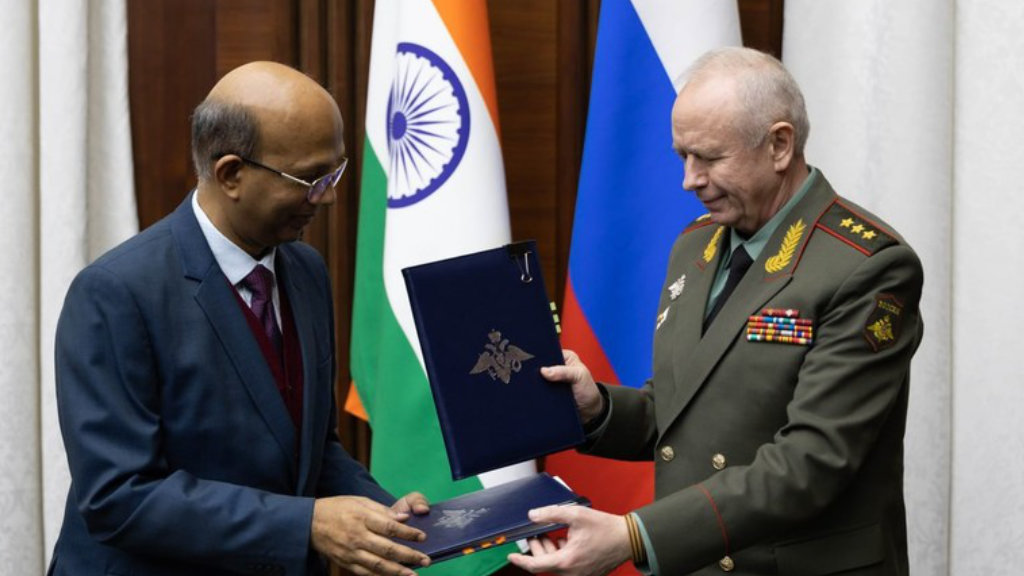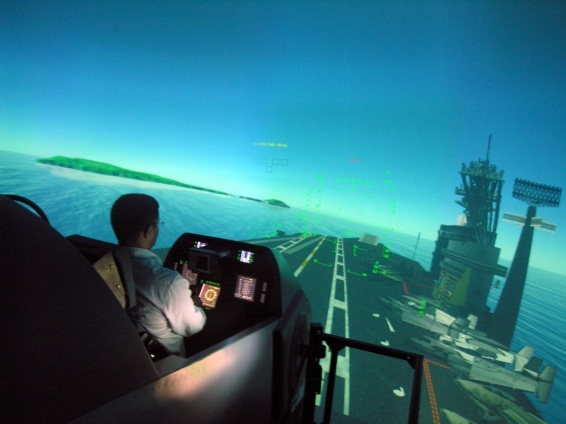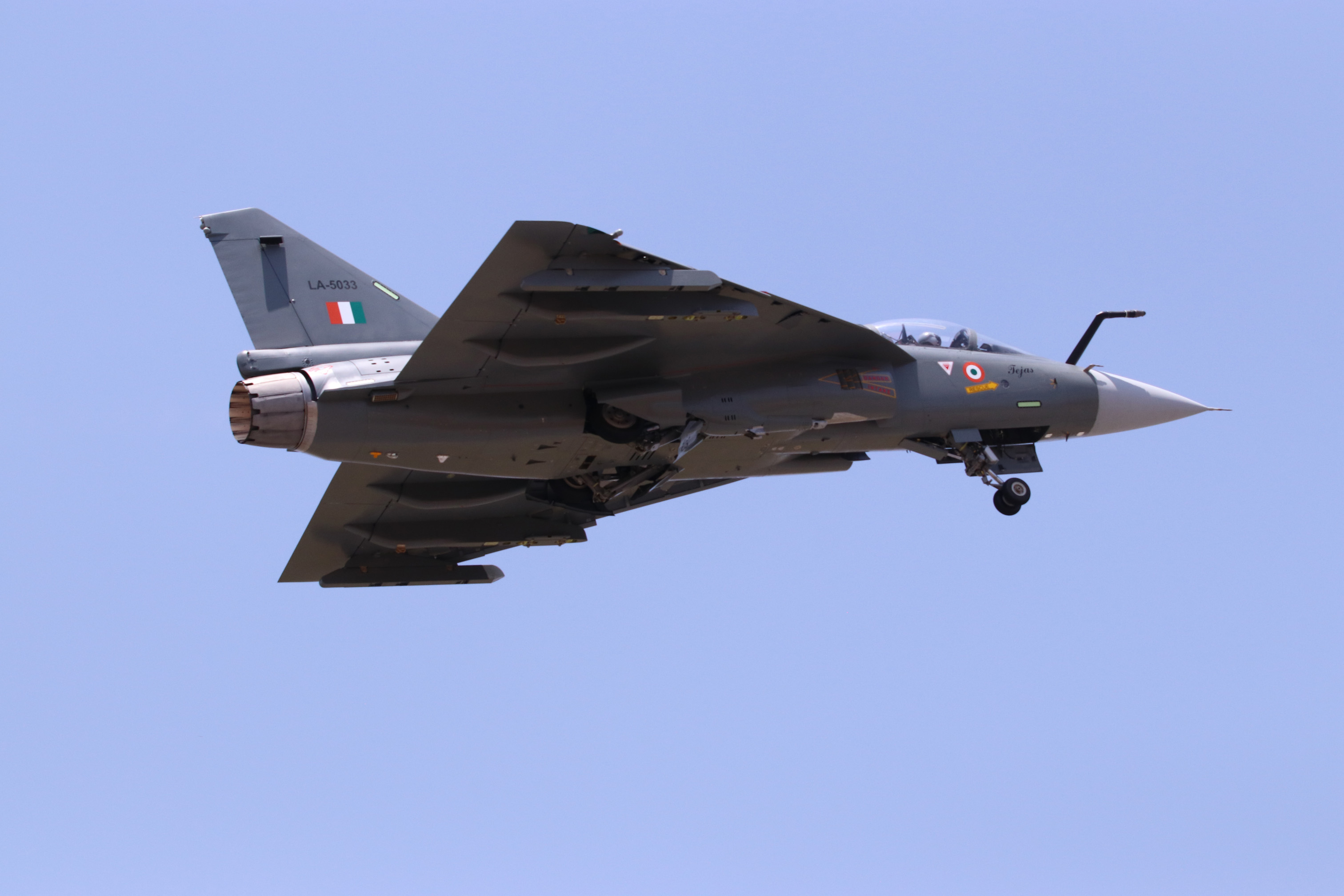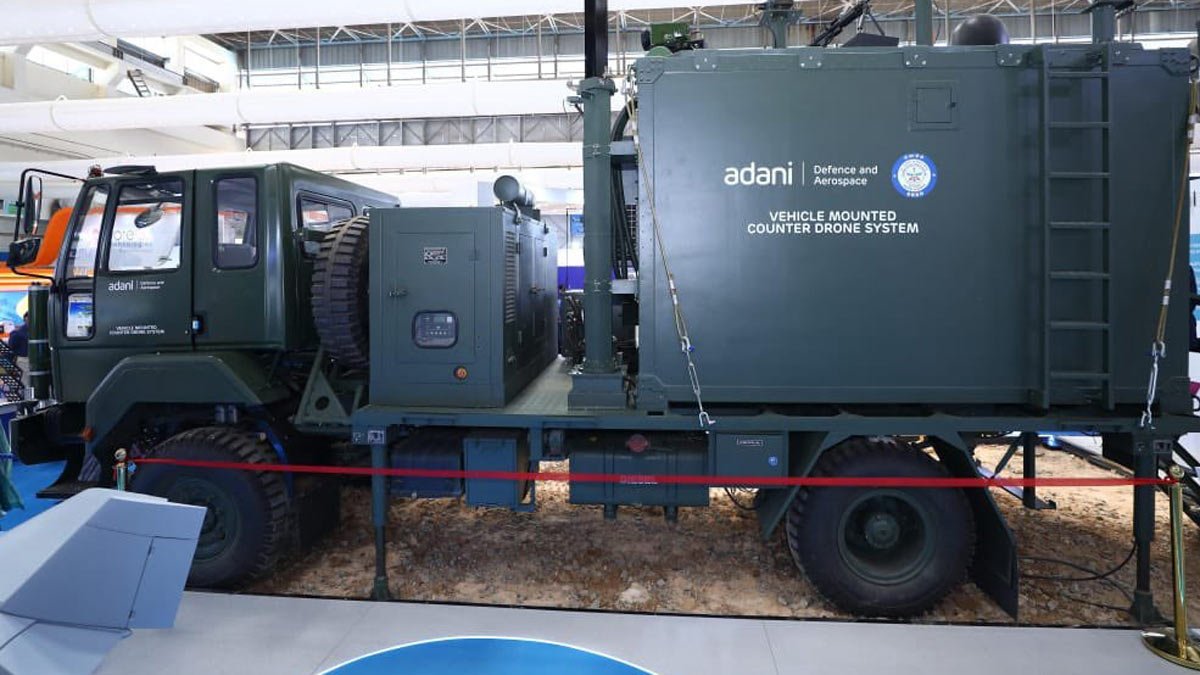AFI
SOURCE: AFI


A prominent Pakistani defence analyst, Air Commodore (Retd) Zia Ul Haque Shamsi, has stirred debate by claiming that the Lockheed Martin F-35 Lightning II, if procured by India, would become a “white elephant” for the Indian Air Force (IAF) due to its exorbitant operational costs and persistent availability challenges. Speaking to regional media, Shamsi argued that the fifth-generation stealth fighter’s price tag—both in procurement and sustainment—exceeds even that of the IAF’s existing Dassault Rafale fleet, posing a logistical and financial burden that could undermine India’s air power ambitions. His critique draws parallels with the Pakistan Air Force’s (PAF) own struggles to maintain its F-16 fleet, highlighting a cautionary tale for India amid escalating regional rivalries.
Shamsi’s assertion hinges on the F-35’s well-documented operational expenses, which dwarf those of the Rafale, a 4.5-generation multirole fighter already in IAF service. The F-35A, the conventional takeoff variant most relevant to India, carries a flyaway cost of approximately $80 million per unit (as of FY 2024), with export prices often inflating to $100-110 million due to training, spares, and support. However, the real sting lies in its sustainment costs—estimated at $36,000 per flight hour by the U.S. Government Accountability Office (GAO), compared to the Rafale’s $16,500 per flight hour, as derived from French Air Force data and India’s 36-jet fleet experience.
Continue readingSOURCE: AFI


In a significant step toward deepening their decades-long strategic partnership, Russia and India have signed the Reciprocal Exchange of Logistics Agreement (RELOS), a defence logistics deal aimed at enhancing coordination in military exercises, disaster relief, and joint operations. The agreement was formalized following a meeting between Russian Deputy Defense Minister Colonel-General Alexander Fomin and India’s Ambassador to Russia, Vinay Kumar, as announced by Russia’s Ministry of Defence on February 19, 2025. This pact marks a milestone in the military cooperation between the two nations, reinforcing their commitment to a “particularly privileged strategic partnership.”
The RELOS agreement is designed to streamline logistical support between the armed forces of Russia and India, facilitating smoother access to each other’s military facilities for fuel, rations, spare parts, and berthing during peacetime and wartime operations. Russia’s Ministry of Defence underscored the pact’s importance, stating, “The parties noted the importance of the signed document for further interaction in the military sphere and confirmed their focus on consistently strengthening cooperation in the spirit of a particularly privileged strategic partnership.” This reflects a mutual intent to elevate operational efficiency and interoperability, particularly in joint military exercises and humanitarian or disaster relief missions.
Continue readingSOURCE: AFI


Cochin Shipyard Limited (CSL), India’s premier shipbuilding and repair company, is actively weighing joint venture (JV) options with global shipbuilding majors to fuel its ambitious expansion plans. As announced by Madhu S. Nair, Chairman and Managing Director, on the sidelines of ongoing industry engagements in early 2025, CSL is in advanced discussions with technical providers in Korea to establish high-quality block fabrication facilities and implement cutting-edge systems and processes. This strategic move, spotlighted during the International Defence Exhibition (IDEX) 2025 in Abu Dhabi (February 17-21), underscores CSL’s intent to elevate its capabilities and cement its position as a global maritime powerhouse.
CSL’s outreach to international partners comes at a pivotal moment for India’s maritime sector, which commands less than 1% of the $140 billion global shipbuilding market despite the nation’s 7,000 km coastline and growing economic clout. With an order book exceeding ?22,000 crore—encompassing 65 vessels, including 14 naval ships and 22 coastal ships for European clients—CSL is poised to capitalize on surging global demand for modern and green vessels. However, as Madhu S. Nair emphasized, the company’s existing infrastructure, while robust, requires enhancement to meet the accelerated turnaround times demanded by its new ?1,800-crore dry dock in Kochi, operational since January 2024.
Continue readingSOURCE: AFI


During a recent test at Aero India 2025 it was revealed, that the UTTAM Radar, developed by the Defence Research and Development Organisation (DRDO), successfully tracked the Light Combat Aircraft (LCA) Mk-1 at an impressive range of 140 kilometres. This demonstration highlights the radar’s capabilities, especially considering that the LCA Mk-1 has an estimated Radar Cross Section (RCS) of over 1 square meter, making it a relatively small target to detect. The radar, equipped with approximately 900 Transmitter-Receiver (TR) modules, offers advanced tracking capabilities, and its performance has significant implications when compared to other aircraft, such as the Pakistani F-16 and JF-17.
The test, which tracked the LCA Mk-1—a relatively small platform—at 140 kilometers, demonstrated the radar’s impressive capability to track targets with low RCS. The small size of the LCA Mk-1 makes it a difficult target for many radars, which typically struggle to detect aircraft with RCSs of 1 square meter or less. This radar range sets a high bar for future air combat capabilities.
Continue readingSOURCE: AFI


Unlike other fighters like the Rafale or Su-30MKI, the F-35 isn’t designed to operate independently. It relies heavily on an ecosystem of software, data-sharing networks, and logistical support that is entirely controlled by the United States. This means India wouldn’t just be buying a plane; it would be locking itself into a complex, costly, and highly controlled American military-industrial system.
One of the biggest concerns is the Autonomic Logistics Information System (ALIS), now being replaced by ODIN. This cloud-based system manages maintenance, mission planning, and logistics for all F-35s worldwide. However, it is controlled by Lockheed Martin and the US Department of Defense, making every aspect of the jet’s operations reliant on American approval. Even close US allies like Australia and the UK have faced delays in getting ALIS approvals, raising concerns about operational independence.
Continue readingSOURCE: AFI


General Electric (GE) Vernova is set to develop a land-based test facility in Hyderabad-India for a full-electric propulsion system designed for the country’s next generation of Landing Platform Docks (LPDs). Integrated Full Electric Power and Propulsion (IFEP) solutions offer enhanced flexibility in vessel design, power scalability, and maintenance efficiency. By eliminating the need for a fixed mechanical drive shaft, powerful electric propulsion motors can be positioned throughout the vessel to maximize available space and improve survivability.
The Ship’s Electric Grid is highly versatile, making electric drive ships suitable for both smaller, lower-voltage naval and coastguard fleets as well as large, high-voltage combat ships. This integrated system efficiently combines power for propulsion and on-board equipment, streamlining energy management across various naval platforms.
Continue readingSOURCE: AFI


The Aeronautical Development Establishment (ADE), a premier research and development laboratory under India’s Defence Research and Development Organisation (DRDO), is making significant strides in the field of advanced simulation technology. Recent developments indicate that ADE is actively working on AI-enabled high-fidelity simulators, a cutting-edge tool designed to revolutionize training, testing, and validation across various sectors, including defence, aerospace, and autonomous systems. This article explores what AI-enabled high-fidelity simulators are and how ADE’s efforts are shaping the future of simulation-based innovation.
High-fidelity simulators are advanced systems that replicate real-world environments, scenarios, or processes with remarkable accuracy. These simulators use sophisticated hardware and software to mimic the physical, visual, and operational characteristics of actual systems, such as aircraft, vehicles, or medical procedures, in a controlled setting. The term “high-fidelity” refers to the level of realism and detail these simulators offer, making them almost indistinguishable from reality in terms of sensory feedback, behavior, and complexity.
Continue readingSOURCE: AFI


Hindustan Aeronautics Limited (HAL) is setting an ambitious goal to ramp up production of the Tejas Mk1A fighter jet to 30 aircraft per year by 2027, a move that underscores India’s drive toward self-reliance in defence manufacturing under the “Make in India” initiative. In a recent statement on February 18, 2025, HAL Chairman DK Sunil revealed that the company has placed orders with private sector firms to supply assembled fuselages, complete with internal components, to reduce assembly time at the final assembly line.
A key component of HAL’s strategy is outsourcing the production of assembled fuselages to private sector firms. Traditionally, HAL has handled the manufacture of major aircraft components, such as the front, centre, and rear fuselages, as well as wings, internally or through a network of over 270 Micro, Small, and Medium Enterprises (MSMEs). However, to accelerate production and reduce bottlenecks at the final assembly line, HAL has now placed orders with private companies to deliver fuselages that come pre-assembled with internal components. This approach minimizes the time and labor required during final assembly, allowing HAL to focus on integrating avionics, weapons, and engines more efficiently.
Continue readingSOURCE: AFI


India is reportedly considering a landmark proposal from Russia to locally manufacture the Sukhoi Su-57, its advanced fifth-generation fighter jet, in a move that could redefine the two nations’ decades-long defence partnership. Dmitry Shugaev, Director of Russia’s Federal Service for Military-Technical Cooperation (FSMTC), shared this development with Sputnik on the sidelines of the International Defence Exhibition and Conference (IDEX) 2025 in Abu Dhabi, signalling a potential expansion of collaboration under India’s “Make in India” initiative.
Shugaev’s comments to Sputnik suggest that India is actively evaluating the offer, though no final decision has been made. He emphasized Russia’s readiness to facilitate local manufacturing, potentially at facilities like Hindustan Aeronautics Limited (HAL), which has a history of producing Russian-designed aircraft such as the Su-30MKI. This move aligns with India’s strategic goal of reducing dependence on foreign imports and enhancing its indigenous defence manufacturing capabilities, a key pillar of the “Atmanirbhar Bharat” vision.
Continue readingSOURCE: AFI


In a recent interview with DW, Chinese military expert and retired Senior Colonel Zhou Bo outlined a potential pathway for China and India to play significant roles in resolving the ongoing conflict in Ukraine. Speaking on February 17, 2025, Zhou suggested that both nations could contribute in three key areas: providing a collective security guarantee to Ukraine, participating in peacemaking efforts, and ensuring that any peacekeeping mission avoids escalating tensions with Russia.
Zhou Bo emphasized that China and India, as major global powers outside the NATO framework, could collaborate to offer a collective security guarantee to Ukraine. This role would involve assuring both Kyiv and Moscow that any ceasefire or peace agreement would be backed by credible measures to prevent future aggression. According to Zhou, such a guarantee could help rebuild trust between the conflicting parties, providing a buffer against renewed hostilities without escalating tensions with Russia.
Continue readingSOURCE: AFI


As the threat from hostile drones and unmanned aerial systems (UAS) continues to escalate in both conventional and irregular warfare, India’s armed forces are intensifying efforts to counter this evolving menace. The proliferation of drones—demonstrated vividly in conflicts like Armenia-Azerbaijan, Israel-Hamas, and Russia-Ukraine—has underscored their potential to disrupt military operations, target critical infrastructure, and overwhelm traditional air defense systems. In response, the Indian Army, Air Force (IAF), and other security agencies are accelerating the induction of anti-drone systems, while emphasizing the urgent need for more advanced, indigenous solutions with enhanced capabilities.
The Indian Army recently floated a tender for the procurement of nine indigenous Integrated Drone Detection and Interdiction Systems (IDD&IS), adding to those already inducted under emergency procurements to secure the frontier with China. These vehicle-mounted systems, currently in use by the Army Air Defence, are designed to detect and neutralize drones through a combination of “soft-kill” (jamming and spoofing) and “hard-kill” (laser-based destruction) measures. However, their limitations—such as a soft-kill range of 2 to 5 kilometers and a hard-kill range of just 800 meters—highlight the need for more advanced technologies.
Continue readingSOURCE: AFI


On February 17, 2025, at the International Defence Exhibition and Conference (IDEX) in Abu Dhabi, Kalyani Strategic Systems Ltd., a wholly-owned subsidiary of Bharat Forge Ltd., introduced India’s pioneering 155mm/45Cal Mounted Gun System named MArG 45. The launch of this innovative defense technology was officiated by His Excellency Shri Sunjay Sudhir, the Ambassador of India to the UAE, marking a significant moment in the exhibition’s history.
MArG 45 is an upgrade of the MArG 39. The MArG 45 stands out as India’s first mounted gun system of its kind, designed to enhance the mobility and firepower of artillery units on a 4×4 in the world.
Continue readingSOURCE: AFI


Bharat Dynamics Limited (BDL) has signed a Memorandum of Understanding (MoU) with US-based Ultra Maritime to locally manufacture sonobuoys in India. This strategic collaboration aims to bolster India’s indigenous defense manufacturing capabilities, particularly in anti-submarine warfare (ASW) technologies.
Sonobuoys are critical components in modern naval warfare, used for detecting and tracking submarines. With this partnership, BDL and Ultra Maritime will work together to establish a robust local production line for these essential ASW assets. This move aligns with the Indian government’s ‘Make in India’ and ‘Atmanirbhar Bharat’ initiatives, enhancing self-reliance in defense production.
Continue readingSOURCE: AFI


On the inaugural day of NAVDEX 2025, held at the ADNEC Centre in Abu Dhabi, UAE, His Highness Sheikh Nahyan bin Zayed Al Nahyan, a distinguished member of the UAE Royal Family, made a notable visit to the BrahMos Aerospace pavilion. The visit underscored the growing defense collaboration between India and the UAE, focusing on advanced missile technology.
Mr. Praveen Pathak, Director of Market Promotion & Exports at BrahMos Aerospace, had the honor of briefing Sheikh Nahyan about the capabilities of the universal BRAHMOS Weapon System. The briefing highlighted the versatility and strategic importance of the BrahMos missile, which is a joint venture between India’s Defence Research and Development Organisation (DRDO) and Russia’s NPO Mashinostroyeniya.
Continue readingSOURCE: AFI


During the bustling opening day of IDEX and NAVDEX 2025 at the ADNEC Centre in Abu Dhabi, UAE, Indian Ambassador to the UAE, Shri Sunjay Sudhir, made a significant visit to the Mazagon Dock Shipbuilders Limited (MDL) stall. This visit came shortly after the ambassador inaugurated the India Pavilion at the exhibition, highlighting the strong maritime and defense ties between India and the UAE.
At the MDL stall, Ambassador Sudhir was briefed by Shri Biju George, Director (Shipbuilding), who provided an in-depth overview of MDL’s products, capabilities, and recent achievements. MDL, one of India’s premier defense public sector undertakings, is renowned for its shipbuilding and submarine construction capabilities, playing a pivotal role in strengthening the Indian Navy’s fleet.
Continue reading